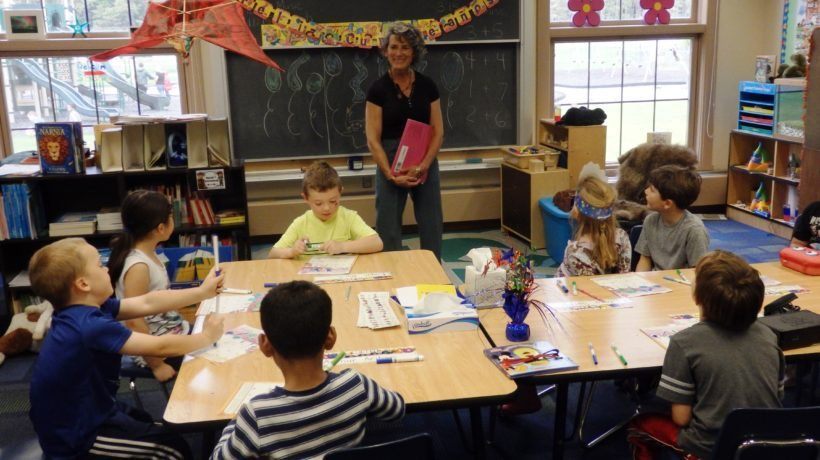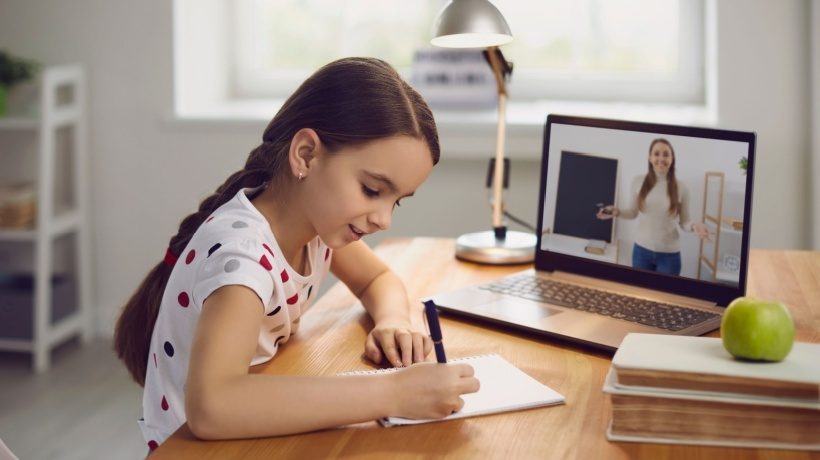Creating Positive Classroom Learning Spaces: 7 Tips
Great teachers design classrooms fostering collaboration to establish a sense of belonging in students. Students gain knowledge readily when the school room transmits warmth, beauty, and promotes harmony. Students learn best in environments permitting movement, giving accessibility to learning tools, and promoting student thinking and creativity.
Even with limited material and equipment, a teacher can create a classroom environment to meet the purpose of instruction while cultivating a community of engaged learners.
1. Establish Command Central
Every year teachers face the task of constructing a classroom layout to meet their teaching goals and to equip students with the learning spaces needed to enhance the curriculum. It may seem a simple goal; however, as any teacher can attest, it is an organic process. Unrefined even until the minute the school bell rings and children walk through the door on day one.
A primary focus in any classroom design is the teacher's work area: command central. When planning your layout, consider how you view your role in the classroom. Do you prefer to view students as they work from the back of the room? Do you believe your presence should be visible to the students at all times? I know some teachers who tote a shoulder bag or briefcase and instruct their students from a single high chair placed up front. Whatever your teaching style, your work area must fulfill your needs, but also correlate with student learning processes within the room.
As the teacher's desk is the center or hub of the classroom, be sure to keep it tidy and organized. Less is best when it comes to keeping items on top of your desk. Students turn in lots of work and having a space for them to place their paperwork will help you keep things in order. Plus, you send a message to each child on management when you can easily locate teaching tools or material on your desk for instruction.
2. Provide Cooperative Spaces
Today's children learn best when the classroom environment allows for the diversity of learning modes and styles. Let's face it, our children are greatly influenced by multimedia and their brains process information differently than when we did years ago. A good teacher will understand these differences and provide learning spaces to meet these challenges.
A teacher needs to consider how to provide for the different learning modes to ensure the content standards are met. Providing for those who learn best, for example, by talking (oral), through listening (aural), touching (tactile), or visually can test the best of instructors. Additionally, educators must take into account how learning styles of children can be stimulated through classroom environment.
Small group spaces can help those who need to process information or analyze content in order to grasp the problem or to form a solution. Although learning styles are developmental, teachers can help current learning styles by giving them the freedom to move within the classroom setting to think or talk things out with others.
All of these considerations must be evaluated and incorporated into the layout of the school room, as much as possible, so that children focus on learning while creating a sense of community as they interact.
3. Create Harmony And Balance
So, your room's color this year is a putrid green with mind-numbing brown accents. Color affects how we think and react, which is especially true for children within a school classroom. Finding ways to change the focal point when color is a factor will only help to promote peace and personal enjoyment in your room.
An instructor of mine once told me that a classroom should make you smile when you pass through the doorway. At first glance, a school room conveys its purpose and transmits a level of comfort to a student. It's kin to the feeling your get on Christmas morning when you see the tree lights twinkling, presents brightly wrapped, and smell sugar cookies baking in the oven. Your classroom should invoke a sense of heightened tranquility to the mind of a child.
Here are a few room décor tips:
- Shop consignment shops for brightly color scarves, material, photos that can be displayed as a theme.
- Have students create art complimenting your curriculum. Hang them from the ceiling or in front of windows.
- Ask permission to paint an accent wall in your room to pull student focus from the mundane environment.
- Paint a mural on one wall. Engage students in the process.
4. Keep On Schedule
I have been accused of being obsessive when it comes to organization. Due to my need to know what is coming up and how to plan, I have given my poor hubby a few headaches now and then. I can relate to the child who consistently asks for deadlines on homework or must have the overall view of a project before beginning to work. Such a learner can become a distraction to others in the classroom setting.
What to do? Educators can help students keep on track and accountable by posting weekly schedules, calendars, learning priorities, and rules hung where students can easily view them. Consider using different colored paper or posters for each day of the week. This enables students to zero in on the day's activities at a glance. It also promotes independent study.
Remember to use print that is attractive, visible and meaningful. The goal is to help organize student learning processes in and out of the classroom, meaning homework assignments are posted on a timely basis. It is important you cover the purpose, use and rules of posted schedules with your students in order to ensure successful learning experiences.
5. Provide The Tools Of The Trade
Because children learn at different rates, a good teacher will allow students to work at their individual level of comfort. As mentioned previously, learning styles vary and keeping curriculum schedules posted enables students to work at their own pace and keeps them accountable. If a child knows what is expected of him, he can be empowered to apply himself to the content and follow through with the results independently.
An effective method building such independence is to establish an area in your room making all necessary forms and materials accessible to students. Consider mounting bins on a wall to hold missed quizzes, homework due, calendars, extra credit, or practice papers. Children are apt to establish a sense of confidence if they know the tools they need are within reach.
6. Highlight A Topic Of Interest
There are times a teacher desires to emphasize certain learning concepts or a central theme in the curriculum. I have resorted to puppets, story telling, role play, special guests, and other creative methods to attract student attention and increase learning retention. It is fun for me and the students to step out of the normal routine to provide a creative learning experience.
Traditionally, instructors assign individual or group projects on a subject to increase the learning experience. Much of the work is done by the students and as they research learning is taking place. Reports generated can be shared orally with the class as a final step.
To take it a step further, with the growth of technology students have access to a wide variety of media to produce a creative final production. Consider having students make a video of their project or make a movie highlighting a main point.
Students can help setup props at the front of the classroom to increase interest in doing project work. This works to build anticipation in students. The daily presence of the props keeps the assignment top of mind and promotes learning activity.
7. Develop A Village Of Learners
Starting on day one, students begin to establish community in the classroom. Acceptance, accountability, worth are emerging concepts setting unspoken rules within the social learning environment. In the present day, children struggle morally and too often self-governed classroom societal boundaries are deficient of appropriate social behavior. It is the teacher's privilege to establish early on a sense of community in students leading to a mutually shared mission of learning.
A common practice I use in my college classes is to involve the students in listing classroom etiquette and policy. Since they are the ones who write the guidelines, few rules are broken. In order for students to feel a part of the group, I advice teachers to enlist students of all ages to help form classroom policy from the start.
Posting student acclamation and accomplishments on a bulletin board tells a child she is valued. Ask children to keep you updated on their extra curricular activities and to bring in any photos, news clippings, or ribbons they may receive in recognition of their talent. As they are posted, have class discussions detailing the reward and encourage students to voice their well wishes to the recipient. Since it is a village of learners, posting at least one accomplishment for each child is a must.
Classroom seating arrangements, when possible, can be used to foster a community environment. Set chairs in pods of 4 to 5 to help students connect and study as a group. Tables instead of desks is another useful approach to helping students value unity in learning. Groups of 2 to 3 at a table can be constructive, when it comes to students helping each other with their studies.
The most important lesson learned through community is respect for each other. Children adapt to diversity of thought through sharing of values, and they learn to handle conflict through effective positive social skills. Community in classrooms is designed to develop applicable knowledge usable beyond the four walls of education.








